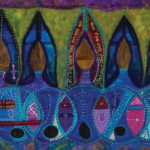Back to school: Do students need a journalism degree? An examination of journalism education as an industry transforms
One might deduce that the debate over the future of journalism education is related to speculation about the future of the industry. But in fact, the debate been going on since journalism was introduced as an academic discipline in postsecondary institutions.
By Paul Fontaine
As journalism students head back to the classroom, the debate over the value of a journalism degree rages on.
After Poynter posted its report The Future of Journalism: 2013 on Aug. 8, professional journalists and journalism academics began drawing their own conclusions on the state of journalism education in North America. But in fact, journalism schools have operated in a precarious state since they were first established in the early 20th century.
Poynter’s report, which surveyed professional journalists and journalism instructors, conveyed a growing disparity between the two groups on the value of a journalism degree. The report concluded “journalism degrees are in danger of becoming perceived as irrelevant. This is reflected in the elimination of journalism programs or the incorporation of journalism into the wider communications curriculum in many universities.”
It’s important to examine the survey’s results and the opinions about the necessity of a journalism degree to highlight contentious and viable approaches to journalism education.
Related content on J-Source:
- Back to school: Want to work overseas? Do your research
- Back to school: How to land a job out of j-school
- Back to school: Loyalist-Trent journalism program unveils its massive new newsroom
Journalism education’s long history as an outsider in the academy
The Poytner report stated that the debate over journalism education is related to speculation about the future of the industry. But while Poynter’s report stated this debate has been going on for more than a year, it has in fact been going on since journalism was introduced as an academic discipline in postsecondary institutions.
In his 2012 article, “The J-School Debate: Is the Timing Finally Right for University Journalism Programs and the Rest of the University Community to Work Together?,” Michael Camp tracks the history of tension between journalism departments and the university community, as well as the disconnects that have historically existed between journalism education and journalism practice.
Camp points to the “largely unregulated” nature of journalism in Canada and the U.S. as one reason why journalism has held an outsider position within many universities, even as they continue to provide a steady income stream for those institutions. He writes: “Professional organizations for journalists exist, but they lack the powers held by professional associations in law, medicine, and engineering, which have peer committees with the power to grant—or revoke—professional licenses to practice.”
News outlets can, of course, fire reporters, but those same reporters can set up their own news outlets and operate out of an office or a room in their house, depending on financial backing. They cannot be removed from working in the industry.
In the early 1900s, Camp writes, New York publishing magnate Joseph Pulitzer foresaw that journalism programs would proliferate across America and “would be seen in roughly the same lights as schools of law, medicine, and engineering.” He was correct on one account—new journalism programs and streams continue to emerge in Canada and the U.S. Despite this, journalism still vies for status as an academic discipline for various reasons, including the hiring criteria within journalism programs, which are under pressure to strike a balance between practical experience and academic accomplishment among their instructors.
Camp also writes about the relationships journalism schools have with the public: “Can journalism professors thrive in a liberal arts university when they are conditioned by their discipline to think of themselves as being in a continuous public dialogue? Universities with journalism departments would be wise to acknowledge this fundamental difference in orientation, if only because it helps explain the different values and apparent isolation of journalism programs within the university community.”
Journalism’s role as a source of information for the public could actually benefit other less media-savvy departments of the institution.
“Professors have published many, many papers and studies that the public should know about, that they really should see—but the work goes into academic journals that the public generally does not read and whatever benefit might have been gained from the public awareness is lost,” Heather Juby, from the Canadian Research Data Centre Initiative, explained in a 2010 interview with Camp.
Medical and business schools: A model for journalism education
Many journalism schools have adopted the “teaching hospital” approach to journalism education, with an emphasis on industry research.
This recent Knight Foundation post explains that this model “requires top professionals in residence at universities. It also focuses on applied research, as scholars help practitioners invent viable forms of digital news that communities need to function in a democratic frame.”
This approach, which relies on coordination between industry and academia, may not benefit journalism in the long term. In an Aug. 21 Nieman Journalism Lab post, Justin Ellis examined the work of University of Nevada Researchers Donica Mensing and David Ryfe, who disagreed with the med-school approach.
Mensing and Ryfe, in their article “Blueprint for Change: From the Teaching Hospital to the Entrepreneurial Model of Journalism Education,” write that by relying on a “teaching hospital” approach, journalism schools are perpetuating a notion that “journalism is a settled profession with clear boundaries that needs only to be practiced more rigorously, instead of a field with its most fundamental premises unraveling.”
This approach doesn’t push journalism students to think differently about journalism, they argue. Instead of following in the path of medical schools, Ryfe and Mensing advocate for an entrepreneurial approach to journalism education, encouraging students to be “enterprising and creative.”
This journalism experience includes critical theory or other introductory courses that explore the relationship between journalism and society. On the skills side, Mensing and Ryfe suggest “courses that go beyond traditional reporting and editing to programming and data visualization.” Another point of contention in debates around journalism education centres on the degree to which programs should look outside of the department for curriculum.
[node:ad]Two varying approaches: trade school versus knowledge profession
In his April 17 post on Poynter.org, Tom Rosenstiel wrote that in recent years U.S. universities have decided to do away with journalism programs all together. “The trade school model of teaching journalism, which has never fit comfortably in research universities, falters when the jobs supporting it are shrinking,” Rosenstiel wrote.
Journalism school curriculum once deemed acceptable is now being challenged by an ever-changing industry. At the same time, that trade school approach continues to be a source of tension between journalism programs and other university disciplines.
Rosenstiel is optimistic about the new models in journalism education that have emerged. The University of Toronto’s Munk School of Global Affairs journalism certificate program is one such program. It allows students to freelance their way to a certificate, under the guidance of a mentor. This gives students a head start when it is time to find employment after graduation.
The Poynter report states one possible solution for journalism education are massive open online courses (MOOCs), opened up to a broader public. The report notes that this approach makes the much-needed move “from a teacher-centric approach to a student/user-centric world.” The struggle for many universities is that it is hard to get faculty members on board with producing content for MOOCs.
Even with these new approaches in North American journalism programs, the question remains: is there a journalism degree program that fits with industry requirements?
In a Mar. 1 post for Maclean’s, Jane Switzer, a graduate of the Ryerson University’s Master of Journalism program, voiced her disappointment in the department’s curriculum. She stated the biggest value of attending Ryerson were the internships she secured while she was there.
Should the goal be to get journalism students into the job market sooner through apprenticeships and internships, so they can learn by doing? That still doesn’t solve the problem of creating a journalism degree program that is comfortable within the university setting and provides its graduates with the skills to make them attractive candidates when it comes time to find jobs as journalists.
In his work “Journalism as the new knowledge profession and consequences for journalism education,” Wolfgang Donsbach argues that journalists need a “deeper knowledge and understanding of the subjects they are covering.” He wrote that he believes a journalism education that facilitates conversations about journalism under the umbrella of other subjects (e.g., politics or statistics) will prepare students to be more informed and effective journalists.
Rosenstiel and Camp both endorse an interdisciplinary approach to journalism education, arguing students should be encouraged to take courses in other disciplines. But which disciplines best enhance a journalism degree remains a point of contention.
Camp points to a foundation in the humanities as the ideal supplement to an education in journalism skills.
He writes that instruction in the humanities makes for better journalism because “the best kind of journalism is tempered with an empathy that comes from a deeper inquiry into human nature.”
Rosenstiel focuses on learning streams that facilitate online interaction and specialize in technology and data processing. Like the curriculum put forward by Mensing and Ryfe, which includes programming and data visualization, an emphasis on technology also has its pitfalls.
Camp writes that because of the ever-changing communication systems environment, what is taught in contemporary classrooms could be obsolete five years from now.
One positive effect stemming from debates about the state of journalism education is the movement toward innovation and critical thinking about the practice of journalism. In addition, there is a growing understanding that journalism education can no longer wait to see what lies in store for the industry.
References
Camp, M. (2012). The J-School Debate: Is the Timing Finally Right for University Journalism Programs and the Rest of the University to Work Together? The Journal of General Education 61, no. 3: 240-263.
Donsbach, W. (2013). Journalism as the new knowledge profession and consequences for journalism education, Journalism 0, no. 0: 1-17.
Mensing D., & Ryfe, D (2013). Blueprint for Change: From the Teaching Hospital to the Entrepreneurial Model of Journalism Education, International Symposium on Online Journalism: 1-19.
Paul Fontaine is a PhD communication studies student at McGill University in Montreal.
Tamara Baluja is an award-winning journalist with CBC Vancouver and the 2018 Michener-Deacon fellow for journalism education. She was the associate editor for J-Source from 2013-2014.





